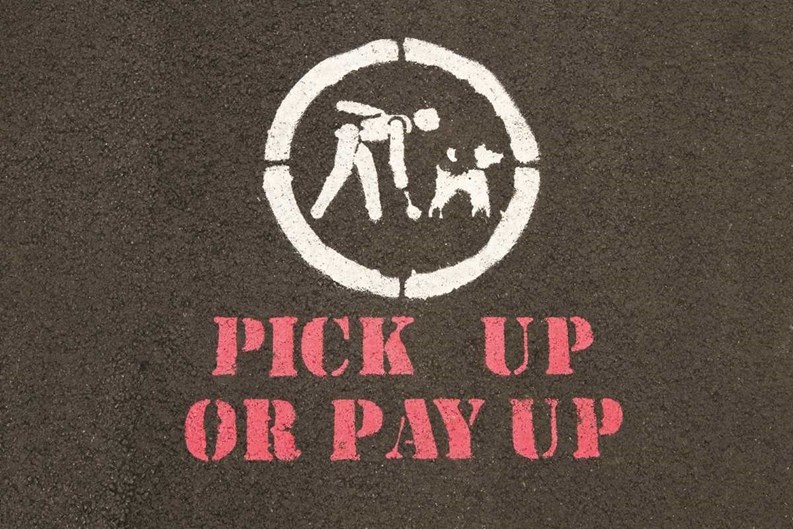Break the rules. Pay a fine. Repeat.
That’s not the way it’s supposed to work—but community associations that don’t keep penalties for rules infractions up to date may find that residents consider it easier (and possibly cheaper) to pay fines than comply with the regulations.
“I recall reading a set of documents—they had to do with one of the row houses in Boston, a building with six units and parking in the alley behind it,” says attorney Henry A. Goodman, a partner at the law firm of Goodman, Shapiro & Lombardi, LLC in Dedham, Massachusetts. “In the bylaws, it said anyone who parked there would be charged $5 for each day their car was parked in the alley. Well, in downtown Boston, I’ll take that!” he exclaims. The decades-old fine, he says, was changed after the board agreed to update the penalty—but not before some residents had enjoyed a really great deal for a really long time.
Out-of-date fines, like out-of-date rules, are most often discovered when a new law firm or new manager arrives on the scene, or when a non-compliance problem reaches the “egregious” stage, Goodman says.
“Boards tend not to be proactive on rules,” David J. Levy, PCAM, president of Sterling Services in Holliston, Massachusetts, agrees. “When an event becomes intractable, that’s when they create a rules committee and go through the rules” and take a closer look at the fines attached to non-compliance.
Where Do They Come From?
“Fines are typically addressed at the outset of the development of the association by provisions in the documents,” explains Attorney Gary M. Daddario, a partner at the law firm of Winer & Bennett in Tyngsboro, Massachusetts. “There are two sort of general philosophies: one is to set forth the specific fines for the association—the constituent documents will tell you exactly what a finable offense is and what the fine is. The other philosophy is to set forth in the documents the general authority for the board to fine, leaving the details for the board to fill in down the road.”
The second method, he adds, is better, because as time marches on and financial values change, it’s easier to update the fines. The association can set the fines by a simple vote of the board. But if dollar-figure fines were set in the original documents, updating the numbers requires a time-consuming, and costly, amendment process.
“A lot of associations have been in existence for 30 years, and the fine is no longer consistent with people’s financial value of the day,” he notes. “Thirty years ago, they might have set a $5 fine and now today that means nothing.
“Unfortunately, we see a fair amount of them—$5 fines, $10 fines. I occasionally see some at $15 and $20, which is a lot better than $5, but it’s still no longer sufficient to motivate people; it doesn’t keep them from breaking the rules, or stop them if they are already breaking the rules.
“If people see that breaking the rules is their best option, then something is wrong,” Daddario contends.
“Most of my condo documents do not have a hard-wired amount in the bylaws,” Levy says. “Most of them say that the board will, from time to time, establish regulations and set reasonable fines.” That allows the association to periodically review and update fines in order to accomplish what they’re supposed to accomplish: to enforce compliance with the rules.
But Do They Work?
Imposing a fine, however, is not by itself a guarantee of compliance.
“If an association fines someone so severely that the amount starts to be absurd and the amount of the fine becomes a bigger issue than the violation was in the first place, then people sort of stop caring,” Daddario explains. When unpaid penalties pile up, offenders may feel they are never going to have to pay the fine. “They figure, ‘If I go to court, surely, the judge will see that the amount of the fine is ridiculous,’ and the fine loses its effectiveness.”
Daddario recalls a pet-related case “that ultimately ended up being about fines for misconduct. It went on for a long period of time; the association allowed it to go on for a long period of time. They fined heavily, and by the time we went to court, it was a matter of something in the neighborhood of $17,000 worth of fines.
“I had advised the client against this course of action … but they elected to pursue the strategy they wanted to pursue. We ended up in court, putting the case in front of a judge. The judge was seriously perturbed by the whole thing and actually from the bench gave like a ‘sermon on the mount’ type speech, just laced into us all. The thing the judge said, I’ll never forget, is that fines are simply a tool; and like any tool, you need to assess quickly whether it’s doing the job or not. And if it isn’t, you need further assistance, like coming in to us here at the court.”
After chastising the board, he notes, “the judge went on to decline awarding $17,000 in fines.”
So what should an association do when a violator continues to ignore the rules? “You need to do something different,” Daddario states—like filing a court action seeking injunctive relief. “This differs from a ‘normal judgment’—it’s not about dollars, but about behavior. It orders someone to cease a bad act, or to take action if there was something they were supposed to do but failed to do.”
“If all you do is to allow fines to accumulate until they become confiscatory,” Goodman agrees, “they are going to be declared to be void and against public policy.”
Pick a Number, Any Number?
So if the goal is to force compliance, setting fines at a high level should stop all rule-breaking, right?
“The tool itself has to be reasonably related to the administration of the problem and the severity of the problem,” Goodman cautions. “For example, someone says that there will be a fine for letting your dog out without a leash. We know that dogs can bark and jump on people. Even the friendliest dog in the world can frighten people. You want to prevent that, so you want to fine owners to stop them from letting the dogs out—that’s maybe a $25 fine.
“On the other hand, you know somebody has been building a fire on the common property to barbecue food; you’re concerned that they may burn down the building. That’s serious; it maybe should carry a $500 fine,” he suggests.
In creating fines that are reasonable, Levy says that boards will often set escalating schedules. “You usually have one warning first without a fine, and the letter includes a hearing for the homeowner to challenge it. If it occurs again, there’s a fine, say $25. The third time, it might be double that.
“Some of my clients do daily (fines), so if you’re parking in the wrong spot, it’s not per month, it’s per day,” he adds.
One key to the system, the experts say, is to carefully document violations.
“If you think somebody is violating a provision, it ought to be a provision that is recorded at the registry of deeds, so everybody has knowledge of what is prohibited,” Goodman says. “You should really record your fines at the registry of deeds with the notice that the fines can be changed in a subsequent amendment, so everybody knows what the fines are.
“Then if somebody has perpetrated a wrong and you want to fine them, you should give them the opportunity to show cause as to why they shouldn’t be fined, or you make the fine stick. If you have someone who believes the rules aren’t meant for them—and they don’t care that they’ve been issued fines—then instead of allowing fines to accumulate, you should go to court and get an injunction against them. In Massachusetts, if someone is violating the rules and is found responsible in a court for having done so, the court can issue an injunction and our statute says the board is entitled to ask for reasonable attorney’s fees and court costs.”
Be Held Accountable
Ignorance of the rules, by the way, is no excuse. “The law puts the onus on the person who buys the condo to look at the documents,” Daddario says. “The courts have consistently held, even if you don’t read those documents, we are going to hold you accountable to have knowledge of those documents, because you should.” The accountability extends not just to resident owners, but to investor owners and their tenants, Daddario says.
And, he adds, boards should be consistent about enforcing rules and imposing fines. “When people violate the rules, boards should act with consistency. If you’re going to fine Person A for breaking Rule #2, then you’d better fine Person B if they break Rule #2, and you’ve got to fine Person C for breaking Rule #2,” Daddario says. “If you fail to enforce the rules, they may argue that you waived the rules; or if you’re treating them differently from someone else, they may argue ‘disparate treatment,’ which is sort of a cousin of discrimination.”
While small-town police departments have occasionally been accused of using traffic violations as a means of enhancing the community’s revenue stream, boards should not see fines as a means of balancing the budget, Levy advises. “Most of my clients, if not all, use the concept that the purpose of fines is to change behavior, not create revenue,” he says, adding, “so almost all of my clients have zero in the budget for fine income.
“The purpose of the fine,” he reminds boards, “is to get the person to change their behavior.”
Pat Gale is associate editor of New England Condominium.







Leave a Comment